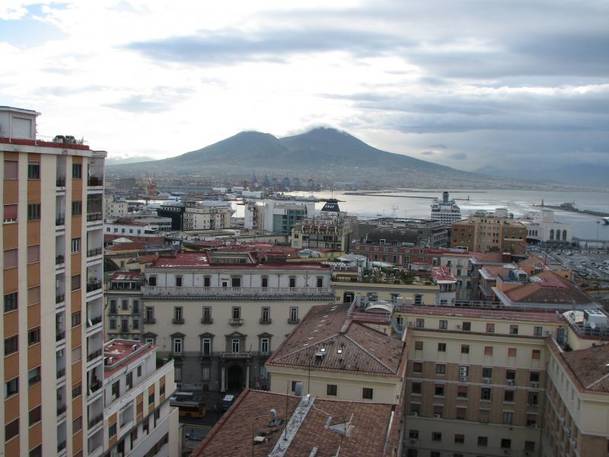


"See Naples and Die" is a cryptically ominous, aphorism attributed to Johann Wolfgang Von Goethe he is said to have uttered about the magnificent opulence of Naples in the late 18th century. I can only guess that had Goethe lived long enough to visit Naples, Florida for the Republican National Convention he would have made a similarly cryptic comment about the political fortunes of Mitt Romney and Paul Ryan. If he had watched the first decidely unPresidential debate with Jim Lehrer at the helm in Denver, Colorado he might have thought Jim had taken his cryptic advice literally. In any case, this piece is merely a nonpartisan (a)musing over my recent week-long trip to Naples.
I went there with my wife Suzanne in order to participate in the Commission on Urban Anthropology’s International Conference on “Entrepreneurial Culture, Corporate Responsibility and Urban Development,” that took place at the Mostra d’Oltremare in Fuorigrotta.
In my talk [2], I spoke about, and showed, how international migrants are transforming urban landscapes by creating “Mixed Cities” and, in turn, how their activities contribute to a broader sense of city and society-wide community.
Of course I used the professional travel opportunity to observe and photographically survey as much of the Naples’ urban labyrinth as I could during the eight days we were there. As I moved around the city with my camera at the ready sweating on the overcrowded La Metropolitana, being scorched atop the “Hop On /Hop Off” bus, jammed on bump-along municipal buses, and wobbling on foot across ancient cobblestones, I looked for, and found, beautiful shabbiness and surprisingly – quiet diversity all around me; contradicting the common view of exclusively bad blood between new and old Napolitani.
Unfortunately, I also learned the difference between tempo Italiano and Tempo Napolitano …. One hour later (un’ora piu tardi). I loved Naples, as even the most sinister-looking places were colorfully filled with friendly people. For example, within two days of walking to the Monetesanto train station from my hotel through Quartieri Spagnoli I became a regular and began to ignore the fact that the city is neither clean nor efficient. In one instance, at my regular stop at the Campi Flegrei station I, and the rest of the regular passengers, scampered back forth as three consecutive track change announcements (cambio di binario) for the same departing train were made within five minutes.
Despite the city’s reputation, I seldom felt unsafe, even as someone tried to pick my pocket on the bus. I simply grabbed his hand, shoved him away and failed miserably in an attempt to curse in Italian. For some reason I didn’t think “a fanabla” would work. Obviously he was an incompetent out-of-towner. Cab drivers on the contrary (anzi) were much more successful in ripping me off, as I never got the same price for the same trip. Even though I am only half Sicilian, the locals had no problem understanding my Italian as they suspected by my appearance that I was not from here and didn't expect much. In one toy store I searched for figurines of ancient Roman soldiers (Cerco statuette di antichi soldati Romani) and, although I seldom understood their response, we still managed to get along with a smile. My wife, having roots on both sides of her family to Campania was often mistaken for a local and asked for directions in Neapolitan, Italian and at least on one occasion in Spanish. Miraculously, while walking along the Via Duomo near the Duomo di San Gennaro we think we found the palazzo where her cousin's family once lived. Another miracle during the trip took place in Ana Capri wehre I found an expensive digital camera under a tree in a small piazza and gave it to a traffic cop along with my business card, just in case… When I came home and told my fellow cynical New Yorkers, they all said the cop would keep it for himself. A week later I received an e-mail from a grateful French visitor.
I saw Naples and survived (Vidi Napoli e sopravvisse).
Source URL: http://newsite.iitaly.org/magazine/focus/op-eds/article/vedi-napoli-e-poi-muori-2012
Links
[1] http://newsite.iitaly.org/files/34586img51561348498715jpg
[2] http://denaro.it/blog/2012/09/12/ethnic-entrepreneurs-as-urban-change-actors/